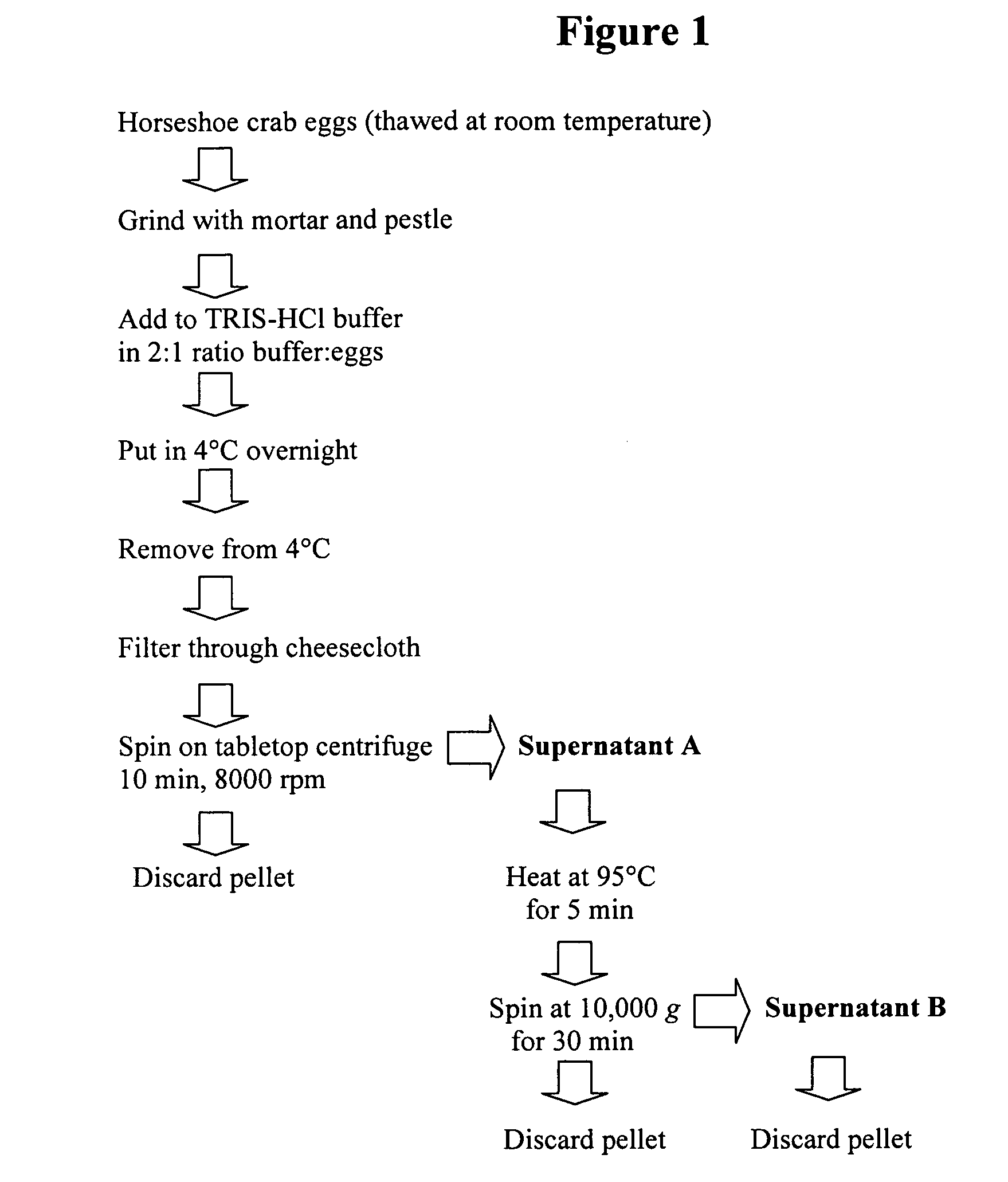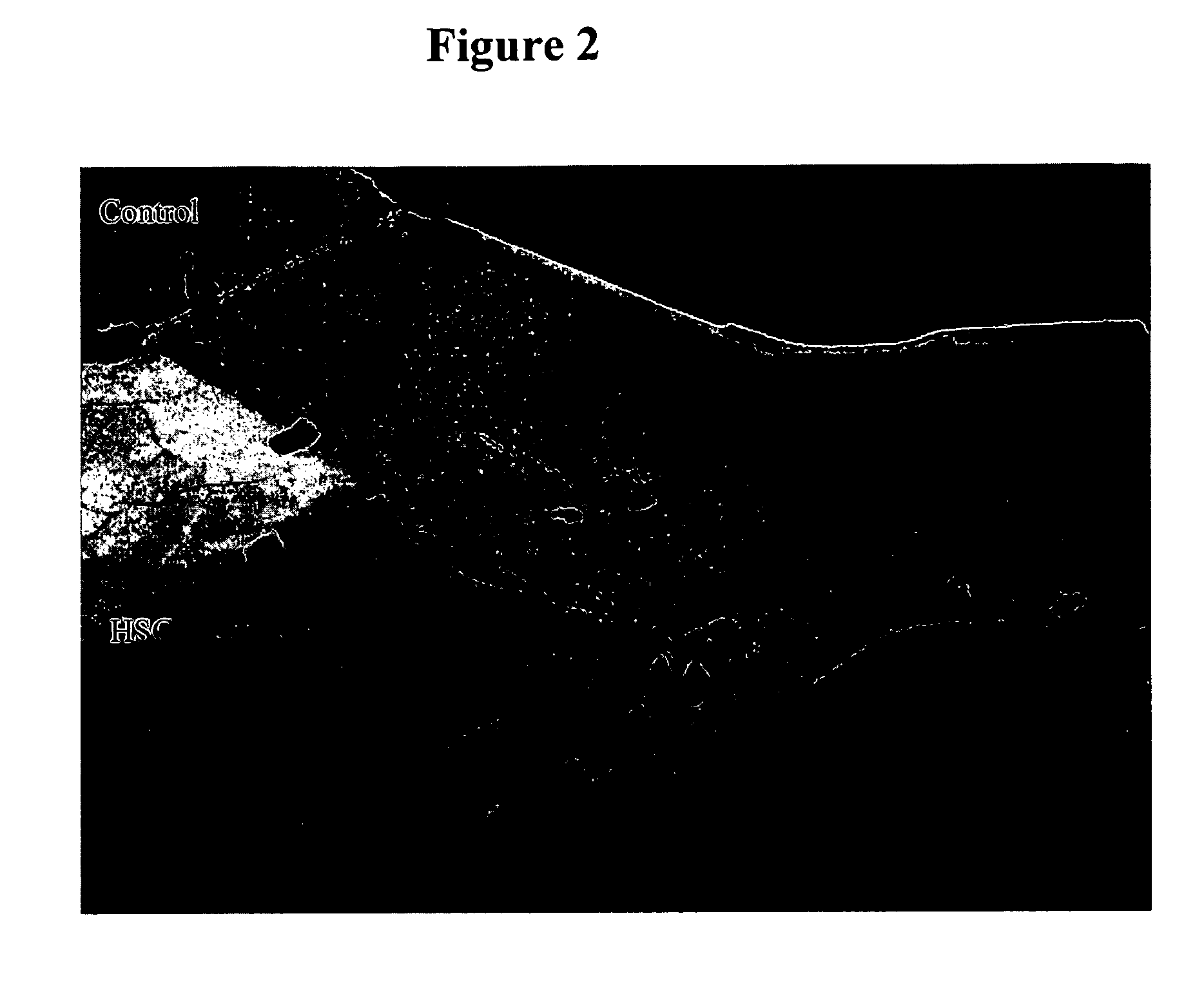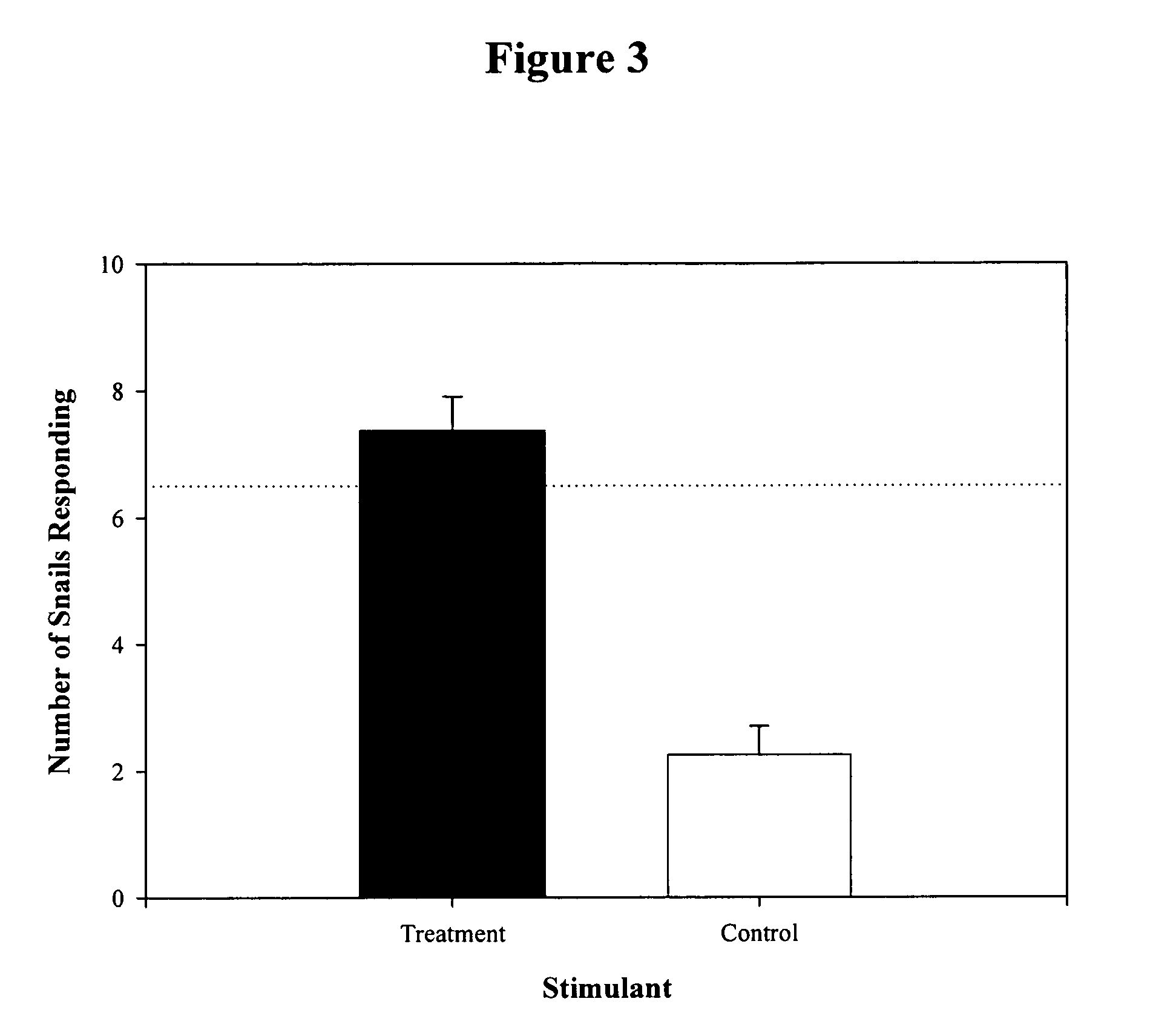Artificial bait based on a peptide attractant found in horseshoe crab eggs
a technology of attractant and peptide, which is applied in the direction of peptide/protein ingredients, fishing, biocide, etc., can solve the problems of reducing the reproductive fitness of the population, affecting the population as seriously, and affecting the infestation of algal gills, so as to achieve less attractant, reduce the response, and increase the effect of positive respons
- Summary
- Abstract
- Description
- Claims
- Application Information
AI Technical Summary
Benefits of technology
Problems solved by technology
Method used
Image
Examples
example 1
Egg Collection
[0125]Horseshoe crabs eggs were collected on various beaches along the southern half of the Delaware Bay in May and June from 1998-2003 during horseshoe crab spawning events. Clutches of eggs were removed from nests approximately one hour after high tide, placed into 50 ml centrifuge tubes and put on ice during transport back to the College of Marine Studies in Lewes, Del. where they were placed in an ultralow freezer (Harris Ultralow Freezer) at −80° C. Eggs were thawed at room temperature prior to use.
Extract Preparation
[0126]Horseshoe crab eggs were thawed, ground with a mortar and pestle then extracted in a 50 mM Tris buffer, pH 7.5, in a 1:2 ratio overnight at 4° C. Extract was then removed from the cold and filtered through cheesecloth. To remove particles, sand and cellular debris, extract was spun on a tabletop centrifuge (Fisher Benchtop Centrific Centrifuge) for 10 min at 8000 rpm. Extract was immediately heated at 95° C. for 5 min. Following heat exposure, t...
example 2
Snail Bioassays
[0127]Mud snails, Ilyanassa obsoleta, were used in bioassays to follow activity through different chemical fractions of horseshoe crab extract (as described in the detailed description above, unless otherwise noted, the term “horseshoe crab extract” shall mean the horseshoe crab extract of purity in supernatant B of Example 1). An advantage of this test for the experimental design is that it takes into account snails that do not make a choice (i.e., they respond to neither the treatment nor the control solution, but rather remain in the starting area). Over 10,000 randomization iterations were run on Monte Carlo software (Resampling Stats, Resampling Stats, Inc.). The simulations indicated that if the average number of snails choosing a stimulant was greater or equal to 6.5, the result was not random (P≦0.01).
[0128]Snails were collected from Cape Henlopen State Park in Lewes, Del. (38.8° N, 75.1° W) and maintained in aquaria with ambient seawater from the Delaware Bay...
example 3
Effective Concentration of Horseshoe Crab Extract
[0130]Aquatic organisms typically respond to a range of concentrations of a particular stimulant. In order to ascertain the range of concentrations of horseshoe crab extract that are attractive to Ilyanassa obsoleta, a range of volumes of extract prepared from horseshoe crab eggs were added to 1 L of seawater and presented in Y-choice assays in order to determine their threshold levels. Concentrations ranging from 3.0×10−5 μl to 27 ml, were tested in bioassays with Ilyanassa obsoleta, producing a response curve typical of detection thresholds (FIG. 6).
PUM
| Property | Measurement | Unit |
|---|---|---|
| molecular weight | aaaaa | aaaaa |
| molecular weight | aaaaa | aaaaa |
| molecular weight | aaaaa | aaaaa |
Abstract
Description
Claims
Application Information
 Login to View More
Login to View More - R&D
- Intellectual Property
- Life Sciences
- Materials
- Tech Scout
- Unparalleled Data Quality
- Higher Quality Content
- 60% Fewer Hallucinations
Browse by: Latest US Patents, China's latest patents, Technical Efficacy Thesaurus, Application Domain, Technology Topic, Popular Technical Reports.
© 2025 PatSnap. All rights reserved.Legal|Privacy policy|Modern Slavery Act Transparency Statement|Sitemap|About US| Contact US: help@patsnap.com



